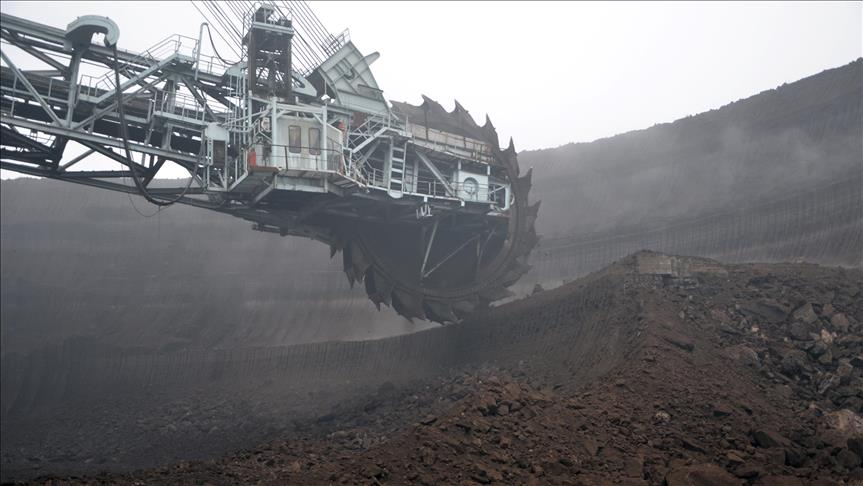The U.S. coal industry played a significant role in the U.S. presidential campaign back in 2016, especially after Donald Trump promised to reverse the decline and to bring about a renaissance to the industry to stand on its feet once again.
For reviving the coal industry, the President Trump signed an executive order on the 28th of March 2017 to nullify the Obama administration’s environmental regulation and directives. Current trajectories and some studies suggest that a further deterioration in the U.S. coal industry is inevitable despite the efforts devoted by the Trump administration.
The coal industry has a couple of stumbling blocks responsible for the irrevocable decline. From increased competition of cheaper natural gas to the growth in renewable energy and increased environmental regulations have all contributed to the contraction of the industry for many years. Current trajectories suggest that the U.S. coal industry is not likely to recover its glorious days.
Although coal provided approximately half of the U.S.’s energy needs from 1950s to 2000s, its prominent place in the energy mix began to erode as oil and natural gas gradually replaced its role. Between 1920 and 1970, the total coal consumption decreased from 73 percent to 18 percent in America’s total energy supply. While around 800,000 people were employed in the coal industry back in 1920, after the introduction of new techniques and automation, currently a total of 145,000 people are working in the industry.
Among various reasons for the decline in coal consumption, changing dynamics of power generation in the U.S. has been the main cause for the contraction. Approximately 93 percent of coal was consumed in the electric power sector in 2010. Along with global financial crises, which suppressed growth in power generation, improvements in energy efficiency of the buildings and appliances have also constrained growth in coal consumption. Even after the economic recovery following the credit crunch, electricity demand in the U.S. has not grown as much as expected, remaining well below the volume of 2007’s figures in 2016.
The shale gas revolution and the surge in gas production have been the second blow for the coal industry. The shale revolution has transformed the American energy landscape like no other. From 2008 to 2016 prices for natural gas per thousand cubic feet dropped from 10 USD to 3 USD. This has facilitated the transition to gas fired power plants from coal-fired power stations. A dramatic decrease in gas prices has challenged the share of coal in power generation.
Another reason for the dramatic fall in coal consumption in recent years has been the power utilities’ move towards the renewable resources. Cheaper renewable energy has paved the way for a dramatic increase in clean power generation. A significant decline in costs for power from renewables has improved its competitiveness. While Solar PV module generation was expanded as much as 40 fold since 2008, over the same period, wind energy generation increased three fold.
Obama administration promulgated several regulations regarding the coal-fired power plants, which Trump administration targeted to change after the election. Obama era regulations aimed at not only protecting the waterways from the pollution occurred during the mining operation but also putting a price tag on the responsible coal mining companies. Although the effects of Trump administration’s efforts remain to be seen, it seems that altering the irreversible decline of the coal industry and rebuilding a bright new future is far beyond possible.
Many industry experts suggest that even at its best days, with the backing of favorable regulatory environment, the coal’s return to its peak levels of past days does not seem feasible. For instance, in 2016, overall coal production in the U.S. plummeted to a level not seen for the last 35 years, hinting that the industry is shrinking at an irreversible rate.
Trump’s decision to withdraw from Paris climate accord at the beginning of the year came as a surprise for many and the consequent call for a freeze on all new regulations were seen as a win for the coal industry. Obama administration’s Clean Power Plan, designed for eradication of coal-fired power plants with renewable and gas power plants, was shelved with Trump’s executive order. In May 2016, President Trump claimed that withdrawal from Paris Agreement would bolster the U.S. coal industry while accelerating economic growth. Trump’s effort to “put the miners back to work”, has somewhat created a false hope for the revival of the industry.
Cheaper natural gas prices combined with slower growth in electricity demand, as well as strong incentives for environmental regulations with a rapid growth in renewable energy in power generation have all worked against the coal consumption in the U.S. The coal industry has to compete with other energy sources, especially renewables as well as shale gas and should acclimatize to changing energy dynamics, a return of coal sector to its glorious days seems far away.
- Opinions expressed in this piece are the author’s own and do not necessarily reflect Anadolu Agency's editorial policy


